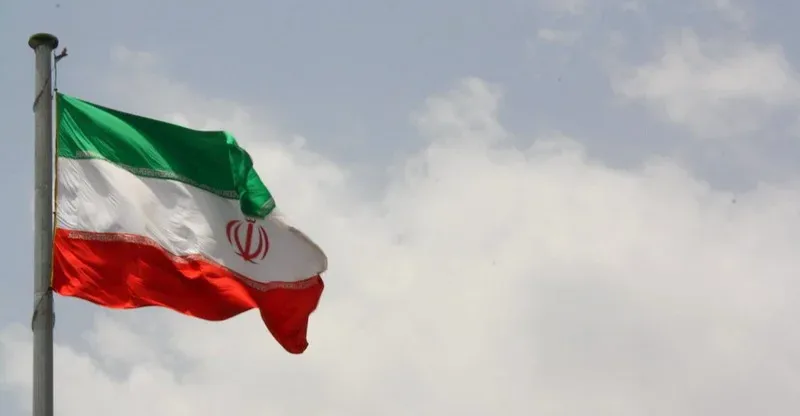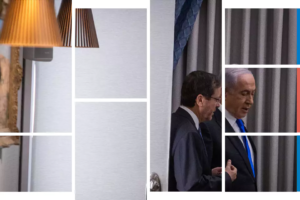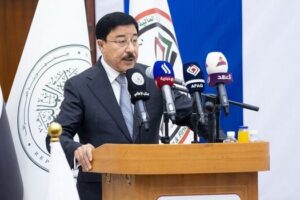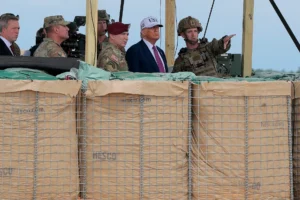
Shafaq News
In Tehran, the rhythm of daily life has returned, yet beneath the city’s hum lies an unmistakable tension. Streets are crowded, cafés are full, but conversations circle back to a single question: what comes after the war? Inside the marble halls of the southern capital, words are weighed carefully, and each public statement carries the weight of a regional recalibration.
Since the brief but intense twelve-day war with Israel in June, Iran has entered a new phase — not of silence, but of strategy. The calm that followed the fighting is less a ceasefire than a pause between chapters of the same conflict. The city’s mood reflects it: defiance and restraint, pride and calculation.
Two Voices, One Doctrine
After weeks of public quiet, Supreme Leader Ayatollah Ali Khamenei re-emerged with a speech that revived Iran’s familiar rhetoric of resistance. Responding to US President Donald Trump’s boast before the Knesset that America had “destroyed Iran’s nuclear infrastructure,” Khamenei countered sharply: “They live in a dream… Let him keep dreaming.”
The message was not simply a denial; it was an assertion that Iran’s nuclear and military capacity — though damaged — remains alive and under reconstruction.
At the same time, former President Hassan Rouhani, who has remained an influential voice in Tehran’s policy circles, took a markedly different tone. Speaking of “the dangers of the day after,” Rouhani reframed deterrence as a philosophy of prevention, not retaliation. “If deterrence exists,” he said, “war will not happen. War begins only when deterrence is doubted.”
This pairing of Khamenei’s defiant posture with Rouhani’s cautious pragmatism is not a contradiction — it is choreography. Iran’s leadership is deliberately projecting two languages of power: ideological steadfastness to its domestic base and strategic reason to the international arena. Together, they form the intellectual and emotional core of what Tehran now calls its “comprehensive deterrence doctrine.”
Iraq: The Western Buffer
Amid this recalibration, Iraq has quietly re-emerged as Iran’s forward shield. National Security Advisor Qasim al-Araji’s recent visit to Tehran, officially described as a follow-up on a 2023 security agreement, carried a far deeper meaning.
Al-Araji met President Masoud Pezeshkian, IRGC Ground Forces Commander Mohammad Pakpour, and Chief of Staff Abdulrahim Mousavi — a lineup that underscored Iraq’s placement within Tehran’s evolving deterrence map.
Pezeshkian emphasized that “Iran sees Iraq as a partner in regional security, not merely a neighbor,” while Pakpour warned that “any threat emerging from Iraqi soil will be treated as if directed against Iran itself.” The tone left little ambiguity: Baghdad remains Iran’s first line of insulation against Western and Israeli pressure.
Behind the diplomatic courtesies, these meetings signaled a quiet consolidation — Iran and Iraq aligning their defense postures, joint border surveillance, and air-defense coordination. In effect, Iraq is becoming part of Tehran’s strategic depth — a “zone of denial” that absorbs and deflects threats before they reach Iranian territory.
Read more: Iraq’s Security Adviser in Tehran: Between ballot boxes and the region’s battlefields
Moscow’s Return to the Chessboard
In the same week, Russian Envoy Alexander Lavrentiev arrived in Tehran carrying a message from President Vladimir Putin. Moscow, he said, views Iran as a “strategic partner in defending regional stability.”
But behind the polite phrasing, there remains an undercurrent of mistrust. Several Iranian military circles openly criticized Russia’s neutrality during the June war, accusing Moscow of “calculated silence” while Iran endured Israeli airstrikes.
Still, Iran knows that its long game — anchoring deterrence in both hard power and strategic partnerships — requires Russia’s technology and China’s political cover. Tehran’s cooperation with Moscow now extends from drone transfers to intelligence exchange in Syria and the Caucasus, while China’s quiet expansion of energy projects inside Iran offers economic oxygen amid Western sanctions.
Together, these relationships form what Iranian analysts call “the Eastern shield” — a web of alliances that turn Tehran’s isolation into strategic leverage.
Deterrence Reimagined
In Tehran’s own reading of the June conflict, Israel’s strikes were not an isolated act but the first Western proxy war directly targeting the Islamic Republic. As Rouhani put it, “Israel executed the attack on behalf of the West.”
Saeed Sharoudi, a Tehran-based expert on Iranian affairs, told Shafaq News that Khamenei’s remarks signal a red line: “Iran will not retreat from its nuclear program. It wants to show its adversaries that it can defend its people and its technology regardless of threats.”
He pointed out that recent backing from Moscow and Baghdad boosts Tehran’s confidence that “any new military adventure against Iran would be far costlier than before.”
Dr. Jalal Jaraghi, director of the Afaaq Center for Iranian-Arab Studies in Tehran, agrees but warns of continued volatility: “Israel did not achieve its primary goals — toppling the system or paralyzing its capabilities — so the risk of renewed confrontation remains.”
According to Jaraghi, Iran’s new strategy is “controlled ambiguity.” Officially, Tehran concedes that parts of its nuclear facilities were damaged, yet it insists the attack failed to cripple the program. “That contradiction,” he said, “is intentional — it keeps adversaries uncertain about how much capability Iran still holds.”
A Strategic Web from Baghdad to Beijing
Tehran’s deterrence model no longer relies solely on missiles or centrifuges. It is increasingly multi-dimensional:
– Military: Missile modernization and air-defense integration with Iraq and Syria.
– Economic: Oil trade pivoting toward Asia, barter deals with China and India.
– Diplomatic: Tighter coordination with Moscow and Beijing inside the BRICS framework.
For Washington and Tel Aviv, this mix complicates response options. Trump continues to celebrate the June strikes as a “decisive victory,” while Israeli Prime Minister Benjamin Netanyahu warns of a “second round if necessary.” Yet intelligence assessments in both capitals acknowledge that Iran’s military recovery was faster than anticipated — a testament to its redundancy networks and underground storage systems.
Written and edited by Shafaq News staff.





